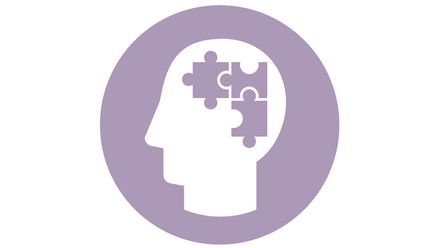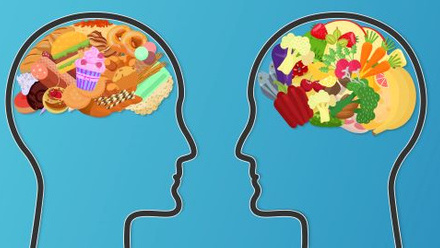Polly Neve looks at the difference between choice and compulsion in the pursuit of healthy eating.
Orthorexia nervosa (ON) refers to a pathological fixation on healthy eating that has been aptly dubbed “a disease disguised as a virtue”.1
Orthorexia is considered a relatively new form of disordered eating. The term was coined by Steven Bratman in 1997, who signalled the potential existence of a new eating disorder.1 Orthorexia is yet to gain recognition in the Diagnostic and Statistical Manual of Mental Disorders (DSM-V). Regardless, it has gained wide recognition in the past two decades among clinicians, researchers and popular culture.
People with ON develop an unhealthy fixation on eating ‘pure’ or ‘clean’ foods.2 So, as dietitians, how do we spot where healthful eating ends and orthorexia begins? According to Steven Bratman, “Orthorexia begins innocently enough, as a desire to overcome chronic illness or to improve general health. But because it requires considerable willpower to adopt a diet which differs radically from the food habits of childhood and the surrounding culture, few accomplish the change gracefully. Most must resort to an iron self-discipline bolstered by a hefty sense of superiority over those who eat junk food. Over time, what they eat, how much, and the consequences of dietary indiscretion come to occupy a greater and greater proportion of the orthorexic’s day.”
Orthorexia may not be recognised as an official eating disorder but, like eating disorders, it can cause harm to physical and mental wellbeing. And, as with all eating disorders, dietitians should be able to recognise the signs – in their patients and themselves.
How common is orthorexia?
Grasping the prevalence of orthorexia is challenging as there is still no officially accepted definition or standardised criteria for diagnosis. Keeping in mind that current screening tools are considered flawed, ON prevalence has been found to be between less than 1% and 6.9% in the general population.3,4 However, higher prevalence up to as much as 50% has been suggested in pockets of the population, including dietitians, nutrition, nursing and medical students, yoga instructors, exercise students, and those working in the performing arts.1,4,5,6
Signs of orthorexia
Of course, paying attention to the healthfulness of one’s diet is not inherently problematic. It is when this becomes entangled with rigid, obsessive thinking, compulsive and ritualistic behaviour, and self-punishment that we should be seeing red flags – although sufferers may be good at hiding these aspects of their behaviours.
Individuals with orthorexia may use their diet to achieve a feeling of perfection, purity, or superiority, and may feel judgemental towards those who don’t follow a healthful diet.7 They may spend excessive amounts of time planning and researching “clean” foods, which interferes with participation in normal social activities and interactions.1
Most people with orthorexia report experiencing magical thinking about food; a careful elimination diet could be a cure-all for everything from a vague sense of unease to allergies to cancer. The benefits are, of course, elusive as the bar is always moving – individuals will feel that it is their own fault for not strictly adhering to the proposed diet regimen2 and so they try and try again, all the while becoming more restricted.
When trying to promote a nourishing diet with clients, we will often use the phrase “most of the time”. I will aim to eat wholegrains or have my 5 a day most of the time. Adding “most of the time” helps keep room for flexibility; a core tenet of a healthy relationship with food. In people with orthorexia, there is little-to-no room for this flexibility and a break from self imposed dietary standards leads to intense guilt and/or compensatory behaviours. Paradoxically, these food-related behaviours are often at the expense of the person’s overall mental and physical wellbeing, including their nutritional status.8
Orthorexia vs other eating and mental health disorders
It’s up for debate whether orthorexia is a unique eating disorder or whether it would be better positioned as a precursor to, or variant of, anorexia or obsessive-compulsive disorder (OCD).1,8
Anorexia and orthorexia seem to share a key similarity in that they are both functional – serving to provide a sense of control and means of emotional regulation to the sufferer. Other crossovers include preoccupation with food and eating, restrictive eating habits, eating rituals, intense anxiety and fear regarding certain foods.1,8 People with orthorexia, anorexia, and OCD all share rigid and perfectionistic personality traits, magical thinking about food, need for control, and anxiety.9
Researchers argue that the distinguishing factor between orthorexia and other eating disorders is that the motivation for restrictive eating is health rather than thinness.2,7 However, this can be a blurred line in our culture where thinness is equated to health. It is true, though, that instead of the disregard for health typically seen in other eating disorders, orthorexia swings in the opposite direction. Those with ON are overly preoccupied with determining the exact nutritional plan that would address physical deficiencies or improve health.
The role of dietitians in managing orthorexia
First and foremost, our ability as clinicians to correctly recognise dysfunctional eating behaviours is critical. The Bratman Test for Orthorexia (BTO) and ORTHO-15 are both screening tools that are useful to be aware of. With clients whom we suspect have disordered eating behaviours, the questions in these tools can be useful in assessments.
Orthorexia treatment typically requires a multidisciplinary team that includes a combination of psychiatrists, psychologists, GPs and dietitians.8 As dietitians, our role is to work with clients to reduce food fears, and help create eating patterns that feel good and provide adequate nutrition. When working with clients with orthorexia, we have found that incorporating mindfulness and intuitive eating principles can be especially helpful. As well as using motivational interviewing skills to resolve ambivalence, looking at the cost of engaging in such restrictive behaviours on the client’s values and life.
If a dietitian doesn’t pick up on a patient’s anxiety about eating, or misinterprets that anxiety as enthusiasm or motivation to eat well, nutrition education can contribute to unhealthful obsessions and fears about food. Importantly, as nutrition professionals, if we are struggling with our own relationship with food, we must recognise that we are worthy of addressing this. We are going to be far better positioned to effectively help patients/ clients if we ourselves are not entangled in our own dysfunctional eating behaviours.
References
- Bratman, S., & Knight, D. (2000). Health food junkies: overcoming the obsession with healthful eating. Broadway Books.
- Hanganu-Bresch, C. (2019). Orthorexia: Eating right in the context of healthism. Medical Humanities, 46(3), 311–322. https://doi.org/10.1136/medhum-2019-011681
- Dunn, T. M., Gibbs, J., Whitney, N., & Starosta, A. (2017). Prevalence of orthorexia nervosa is less than 1 %: data from a US sample. Eating and Weight Disorders: EWD, 22(1), 185–192. https://doi.org/10.1007/s40519-016-0258-8
- Varga, M., Dukay-Szabó, S., Túry, F., & van Furth Eric, F. (2013). Evidence and gaps in the literature on orthorexia nervosa. Eating and Weight Disorders - Studies on Anorexia, Bulimia and Obesity, 18(2), 103–111. https://doi.org/10.1007/s40519-013-0026-y
- Bo, S., Zoccali, R., Ponzo, V., Soldati, L., De Carli, L., Benso, A., Fea, E., Rainoldi, A., Durazzo, M., Fassino, S., & Abbate-Daga, G. (2014). University courses, eating problems and muscle dysmorphia: are there any associations? Journal of Translational Medicine, 12(1). https://doi.org/10.1186/s12967-014-0221-2
- Tremelling, K., Sandon, L., Vega, G. L., & McAdams, C. J. (2017). Orthorexia Nervosa and Eating Disorder Symptoms in Registered Dietitian Nutritionists in the United States. Journal of the Academy of Nutrition and Dietetics, 117(10), 1612–1617. https://doi.org/10.1016/j.jand.2017.05.001
- Bratman, S. (2017). Orthorexia vs. theories of healthy eating. Eating and Weight Disorders - Studies on Anorexia, Bulimia and Obesity, 22(3), 381–385. https://doi.org/10.1007/s40519-017-0417-6
- Koven, N., & Abry, A. (2015). The clinical basis of orthorexia nervosa: emerging perspectives. Neuropsychiatric Disease and Treatment, 11, 385. https://doi.org/10.2147/ndt.s61665
- Dunn, T. M., & Bratman, S. (2016). On orthorexia nervosa: A review of the literature and proposed diagnostic criteria. Eating Behaviors, 21, 11–17. https://doi.org/10.1016/j.eatbeh.2015.12.006






